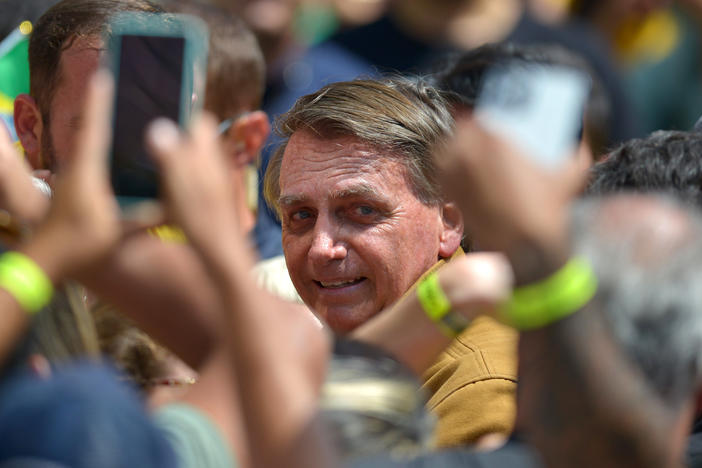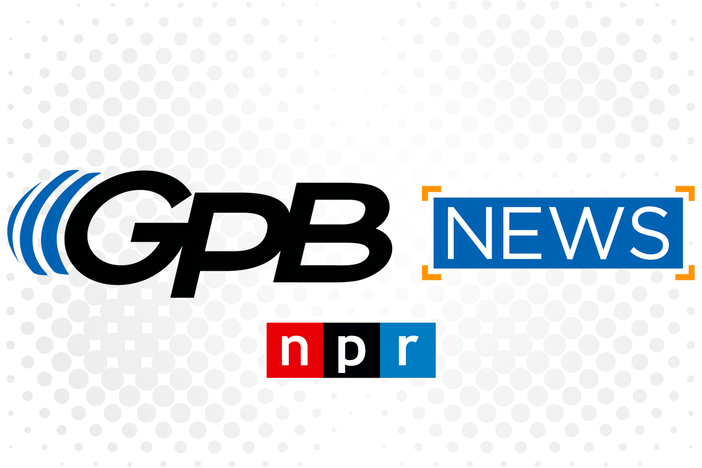Section Branding
Header Content
Neck And Neck In The Polls, Peru's Presidential Candidates Are Far Apart Politically
Primary Content
NPR's Ailsa Chang speaks with Andrés Calderón, an independent lawyer and journalist, to check in about the Peruvian presidential election.
Transcript
AILSA CHANG, HOST:
And now to a nail-biter in Peru - one day after Peruvians voted for their next president, the results remain too close to call. The two candidates are neck and neck in the polls. But politically, they are quite far apart, leaving much of the electorate polarized at this moment. To help us understand what is happening, we're joined now by Andres Calderon, professor and researcher at University of the Pacific in Lima.
Welcome.
ANDRES CALDERON: Hi, Ailsa. Thank you for having me.
CHANG: First of all, can you just tell us more about who these two candidates are?
CALDERON: Keiko Fujimori is a political woman in Peru who has been running for president for the third time now. Most notably, she is the daughter of a former president and now-imprisoned president because of charges of corruption and violation of human rights - Alberto Fujimori. And Pedro Castillo is the leader of a political party of extreme left, who was most recently known in 2017, when he led a strike of teachers. He's a teacher of elementary school in Cajamarca, Peru, and he led this strike. After that, he joined Peru Libre, a political party that is running for president.
CHANG: And how have Peruvian voters generally been talking about this choice, this very stark choice that they have between these two very opposite candidates, Fujimori and Castillo?
CALDERON: Well, it has been a very extremely polarized election, and I believe that both Fujimori and Castillo have used the antagonism as their main source of speech. Fujimori has used allegations that voting for Castillo encompassed the return to poverty, to communism and even the rebirth of terrorism. On the other hand, Castillo did something similar, stating that a vote for Fujimori represented corruption, disregard for the working class and theft by the rich. So that leaves most of the population in a very difficult choice between which one is the lesser of two evils, and that has created a climate of tension and unrest in the population.
CHANG: And I understand that as initial votes have been counted, it looked like Fujimori was in the lead, but there are still votes left to be counted. Where are those votes from? And who are they expected to favor?
CALDERON: It's going to be a close call in the general election, but there has been huge differences in some national results. In 23 out of the 27 electoral regions in Peru, one of the candidates won by a 10% or more margin - Fujimori capturing the interest of voters mostly in the capital city, Lima, and in the north region of Peru, and Castillo having won the preferences by the people in the Andean region and in the south of our territory.
CHANG: You know, I have to ask. This election is happening as Peru is struggling with an enormous economic crisis and one of the world's highest COVID death rates per capita. And I mean, just last year, the country had three different presidents within the span of one week. What can a newly elected president feasibly do in this kind of climate?
CALDERON: Right. No political party will have a majority of seats in the Congress. I believe that part of the political turmoil that we had in Peru - and we had, as you mentioned, three presidents in just one week - was due to this very stressing struggle between the Congress and the executive branch. This will probably not happen in the same manner in 2021, but that will also depend of how willing are any of those two candidates to extend a branch of peace and to try to create some kind of breach (ph) of communication between political parties in our current scenario.
CHANG: Andres Calderon is a columnist and also a professor at University of the Pacific in Lima.
Thank you so much for joining us today.
CALDERON: Thank you so much for having me, and good day.
(SOUNDBITE OF MUSIC) Transcript provided by NPR, Copyright NPR.
Bottom Content


